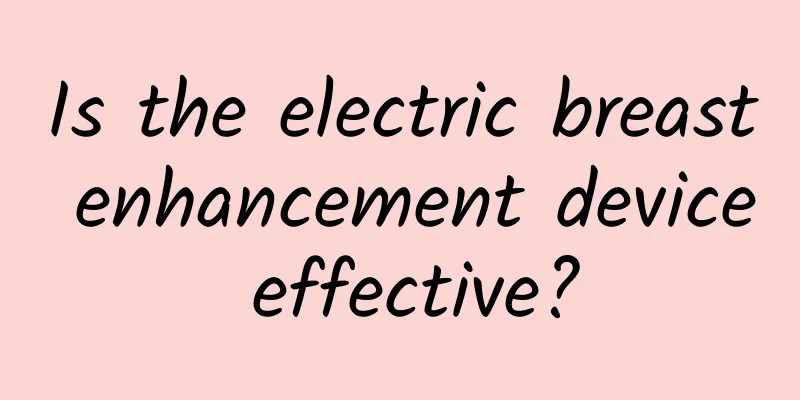Autoimmune hepatitis treatment

|
Hepatitis is already a very common liver disease, and this disease is contagious. Everyone should pay attention to it. There are many types of liver diseases now, and there are many people suffering from liver diseases. The most common one is hepatitis. There are also many types of hepatitis. Do you know about autoimmune hepatitis? This disease is very common in women, and the incidence rate is high after middle age. Let's take a look at the treatment of autoimmune hepatitis. Autoimmune hepatitis generally manifests as chronic hepatitis, which will have many impacts on us. Everyone should know that hepatitis is an easily contagious disease. If you have hepatitis, we must be able to prevent infection of this disease in a timely manner. Let’s take a look at the treatment methods for autoimmune hepatitis. Clinical manifestations The disease is more common in women, with a male to female ratio of 1:4, and two peak ages of onset: 10 to 30 years old and over 40 years old. Most patients present with chronic hepatitis. About 34% of patients have no symptoms and seek medical treatment only because of abnormal liver function found during physical examination; 30% of patients have cirrhosis when they seek medical treatment; 8% of patients seek medical treatment due to manifestations of decompensated cirrhosis such as hematemesis and/or melena; some patients have acute or even fulminant onset (about 26%), with high levels of transaminase and bilirubin and a severe clinical course. About 17% to 48% of AIH patients have other autoimmune diseases, including rheumatoid arthritis, thyroiditis, ulcerative colitis, type 1 diabetes, etc. These diseases are even the reasons for some patients to seek medical treatment for the first time. Autoimmune hepatitis is a chronic progressive inflammatory liver disease mediated by an autoimmune response. Its clinical features include varying degrees of elevated serum transaminases, hypergammaglobulinemia, and positive autoantibodies. Its histological features include interface hepatitis with a predominant infiltration of lymphocytes and plasma cells. Severe cases can rapidly progress to cirrhosis and liver failure. The disease occurs worldwide, with a relatively high incidence in European and American countries. Its exact incidence and prevalence in my country are still unclear, but the number of cases reported in domestic literature shows a clear upward trend. Drug treatment The main purpose of AIH treatment is to relieve symptoms, improve liver function and pathological tissue abnormalities, and slow down the progression to liver fibrosis. Currently, glucocorticoids alone or in combination with azathioprine are the standard treatment options for AIH. 1. Treatment indications: (1) Absolute indications: serum AST ≥ 10 times the upper limit of normal, or serum AST ≥ 5 times the upper limit of normal with γ-globulin ≥ 2 times the upper limit of normal; histological examination shows bridging necrosis or multilobular necrosis. (2) Relative indications include symptoms such as fatigue, joint pain, and jaundice; serum AST and/or γ-globulin levels are abnormal but lower than the absolute indication standards; and histological examination shows interface hepatitis. 2. Initial treatment plan (1) Prednisone therapy alone is suitable for patients with significant leukopenia, pregnancy, concomitant tumors or thiopurine methyltransferase deficiency, or those who only need short-term treatment (≤ 6 months). First week: prednisone 60mg/d; second week: 40mg/d; third week: 30mg/d; fourth week: 30mg/d; from the fifth week: 20mg/d, maintain until the end of treatment. (2) Combination therapy of prednisone and azathioprine is suitable for postmenopausal women, osteoporosis, brittle diabetes, obesity, acne, psychological instability or hypertension. The dosage of prednisone is: first week: 30 mg/d; second week: 20 mg/d; third week: 15 mg/d; fourth week: 15 mg/d; from the fifth week onwards: 10 mg/d. Starting from the first week, patients were given azathioprine 50 mg/d simultaneously and maintained until the end of treatment. 3. Endpoints and countermeasures of initial treatment Adult AIH should be treated continuously until endpoints such as remission, treatment failure, incomplete response or drug toxicity occur (see Table 3). In 90% of patients, serum transaminase, bilirubin and γ-globulin levels improve within 2 weeks of starting treatment, but histological improvement lags behind by 3 to 6 months, so it usually takes more than 12 months of treatment to achieve complete remission. Although some patients continue to remit after stopping treatment, most patients require maintenance treatment to prevent relapse. 4. Relapse and Countermeasures Relapse refers to a re-increase of transaminase to more than 3 times the upper limit of normal and/or a serum gamma-globulin level exceeding 2,000 mg/dL after the disease is relieved and the medication is stopped. It usually occurs within 2 years after stopping the drug. Patients with relapse are at increased risk of progression to cirrhosis, gastrointestinal bleeding, and death from liver failure. For patients with first relapse, the initial treatment plan can be re-selected, but for patients with at least 2 relapses, the treatment plan needs to be adjusted. The principle is to use lower doses and longer maintenance treatment to relieve symptoms and keep the transaminase level below 5 times the normal value. Generally, after inducing remission with prednisone, the dose is reduced by 2.5 mg per month until the lowest dose that maintains the above indicators is achieved (the lowest average dose for most patients is 7.5 mg/d), and then long-term maintenance treatment is carried out. To avoid the adverse reactions of long-term use of glucocorticoids, after the condition improves, the dose of prednisone can be reduced by 2.5 mg per month while azathioprine can be increased by 2 mg/kg per day until prednisone is withdrawn and the minimum maintenance dose of azathioprine is reached. Alternatively, the lowest dose of the combination therapy may be used. 5. Alternative treatment: Patients who still have no histological remission under high-dose glucocorticoid treatment or who cannot tolerate drug-related adverse reactions may consider using other drugs as alternative options. For example, cyclosporine A, tacrolimus, budesonide, etc. may be effective for adult patients with glucocorticoid resistance. For those who cannot tolerate azathioprine, 6-mercaptopurine or mycophenolate mofetil can be tried. In addition, ursodeoxycholic acid, methotrexate, cyclophosphamide, etc. can also be tried, but the efficacy of the above drugs still needs to be confirmed by large-scale clinical trials. [2-3] Liver transplantation Liver transplantation is an effective method for treating end-stage AIH cirrhosis. Patients with acute onset of fulminant liver failure that is ineffective with hormone therapy, and patients with chronic onset who develop liver dysfunction during conventional treatment or treatment should undergo liver transplantation. The 5-year survival rate after transplantation is 80% to 90%, and the 10-year survival rate is 75%. In most patients, autoantibodies turn negative and hypergammaglobulinemia is relieved within 1 year after liver transplantation. AIH may recur after surgery, and the recurrence rate is high in patients with fulminant hepatic failure before liver transplantation. The treatment for recurrent patients is still prednisone alone or in combination with azathioprine. Most patients can effectively control the disease and effectively improve the transplant success rate and survival rate. Everyone should understand the treatment of autoimmune hepatitis. The occurrence of hepatitis must be able to attract our attention in time. If it develops into chronic hepatitis, it will cause great harm to the health of the body, and eventually it can cause more serious liver disease, such as liver cancer, which will cause certain harm to the patient's life safety. It is necessary to go to a regular hospital for treatment in time. |
<<: Best treatment for otitis media
Recommend
What are the effects of removing the ovaries? In what cases is the ovaries removed?
For female friends, when they have ovarian proble...
White pimples on inner thighs
Generally speaking, the appearance of white pimpl...
What is the cause of myasthenia gravis?
In the eyes of most people, myasthenia gravis is ...
What to do if a newborn baby gets angry? Pay attention to the method of reducing fire
Newborn babies are prone to getting angry easily ...
Hermaphroditism Hypospadias
Hypospadias is a relatively common congenital def...
Is it cerebral palsy if the baby tilts his head back?
Generally speaking, when a baby has head depressi...
Medical stone function and use
Today's society is an era of health care and ...
How to use a gastrointestinal decompression device
A gastrointestinal decompression device refers to...
Dull pain under left ribs
Many times, when our bodies show some discomfort,...
Is itching in the ear due to inflammation?
In the dry season, we sometimes feel itchy. This ...
What are the methods of traditional Chinese medicine to treat neurasthenia?
Traditional Chinese medicine is better for treati...
What to do if a two and a half year old baby has a fever
It is quite common for babies aged two and a half...
The efficacy, effects and contraindications of Yuanshen
The function of Yuanshen is to remove blood stasi...
What is pomegranate wine? What are the benefits of pomegranate wine?
I believe that everyone who has seen Stephen Chow...
Is a heart rate of around 140 dangerous?
A heart rate of around 140 is considered tachycar...









